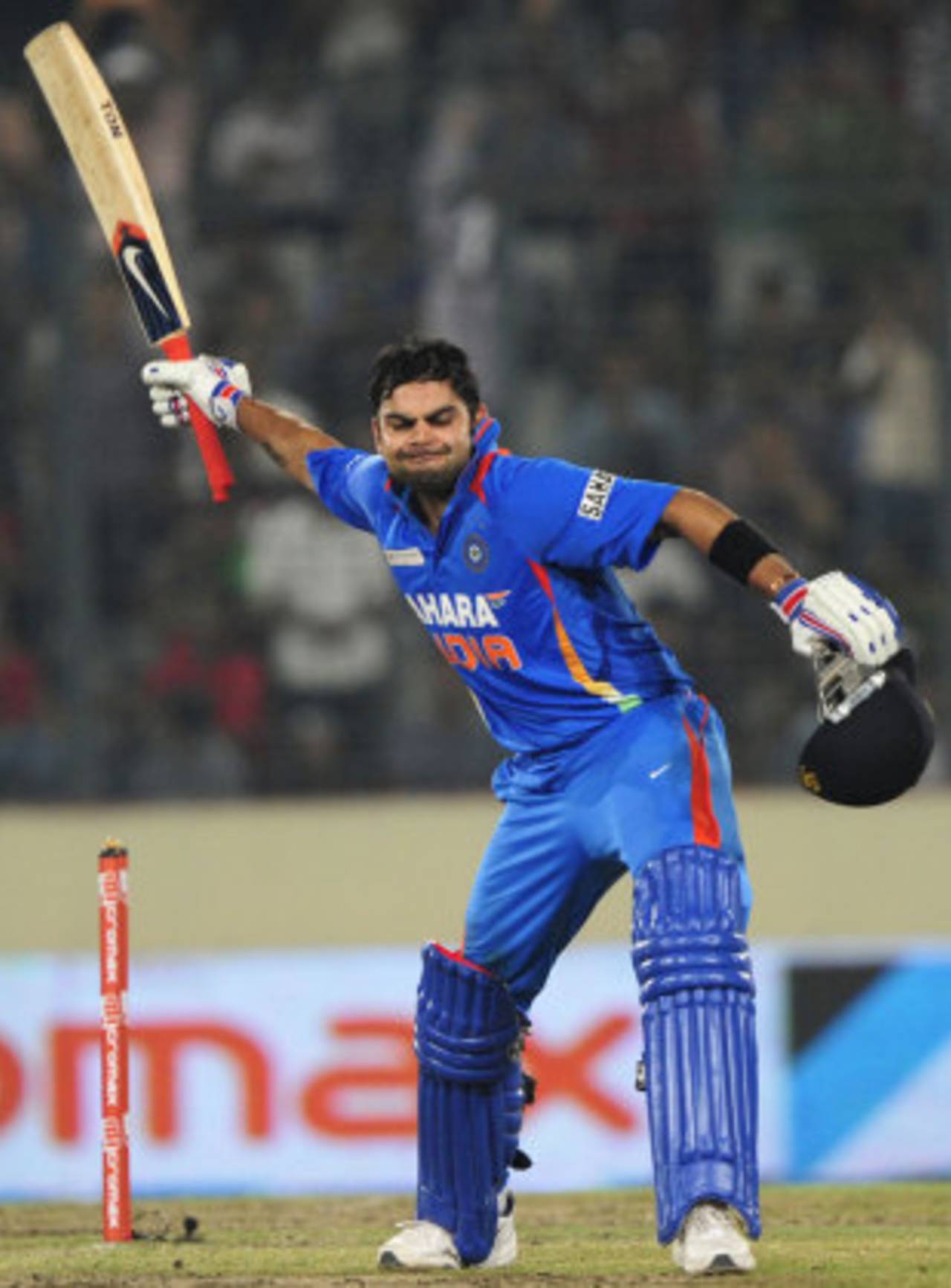"I really like playing on this ground,"
Virat Kohli had said earlier this week, after being named Man of the Match for his 108 against Sri Lanka. On Sunday, he added another compelling reason for him to love the Shere Bangla National Stadium. His 183 against a top-quality Pakistan attack, in a high-pressure match in front of a packed house, was his fourth hundred at the venue. It also orchestrated India's largest successful ODI pursuit, and underlined his credentials as a master of the chase.
From the early days of his international career, he has shown his excellence as a chase artist. His
first ODI century came in a little-remembered series of the many against Sri Lanka in recent years, stabilising India after the early loss of Virender Sehwag and Sachin Tendulkar before helping them power through to a target of 316 with seven wickets remaining. He did something similar, though to a smaller extent, in the biggest match of his career to date, the World Cup final.
Having made his debut in 2008, he was still struggling to stand out among the muddle of competitors for a middle-order spot in the Indian team till late 2010. That's when he conjured another of his now regular centuries after India had been set a large target, against Australia
in Visakhapatnam. It kickstarted an extraordinarily fertile spell, and he hasn't missed a match since. The numbers he's stacking up are staggering: in 48 innings batting second, he averages 58.40 and has seven hundreds and 13 half-centuries.
Less than three weeks ago, Kohli masterminded a miraculous chase
against Sri Lanka in Hobart, through an unbeaten 86-ball 133 in a crunch match. He had called it his best innings, but now, there's a new contender for that title.
Back in 2005, MS Dhoni had taken a step towards superstardom with a 183 of his own,
against Sri Lanka in Jaipur. What that innings is most remembered for is the sustained brute-force hitting - Dhoni had clubbed 10 sixes in an innings that lasted 145 deliveries. Kohli's effort on Sunday consumed just three deliveries more, but didn't contain that kind of violence.
For a 15-over spell till the start of the batting Powerplay, Kohli didn't even hit a boundary, relying more on his favourite way of building through the middle overs - the risk-free single down the ground. The entire innings contained only one six, an effortless hit that crashed into the hoarding beyond extra cover. One of his trademark strokes, the whip off his pads to send the ball anywhere between backward square leg and midwicket, made a frequent appearance and fetched him a lot of boundaries.
Even as late as the 40th over, he was coasting along at little more than a run-a-ball. Only at that stage did Kohli unleash a boundary-barrage with which Pakistan's hopes completely evaporated. For the second time in a month, India had chased down 300-plus comfortably and they had hardly needed the services of Dhoni, the finest finisher in the game.
What makes Kohli so dangerous is the adaptability of his game, something which Dhoni has also developed over the years. He can be the quiet workhorse, picking off the singles through the middle overs, or unfurl a Twenty20-style boundary spree. The ability to effortlessly mould his game to the match situation and the cool head to deal with the ever-present pressure of the asking-rate have been critical to his second-innings successes.
The flexible playing style also makes him an ideal No. 3, capable of taking the baton after a cracking start or providing the ballast in case of early losses. "Batting at No.3 is a very important position for the team. I value my wicket much more now," he said after the match, on a day when his one-day average breached 50. "I know if I get set, get a good platform for myself, then I can score more and help the team. As I said earlier it is [about] taking the game as close as possible. If one guy is doing very well at the other end, then I play a different role."
Many are put off by his invective-laden century celebrations, of which there was one more display in Mirpur, and the tattoos and the bling, but after an ultra-successful year and a half, few will be questioning his expertise at pacing a chase, or his position among the leading one-day batsmen around.
